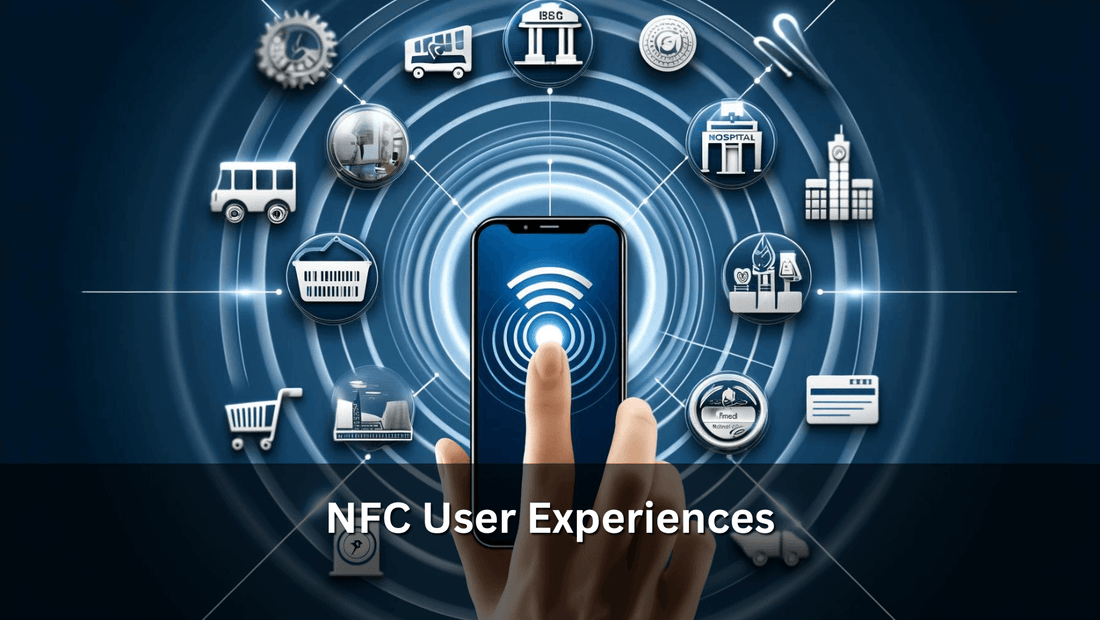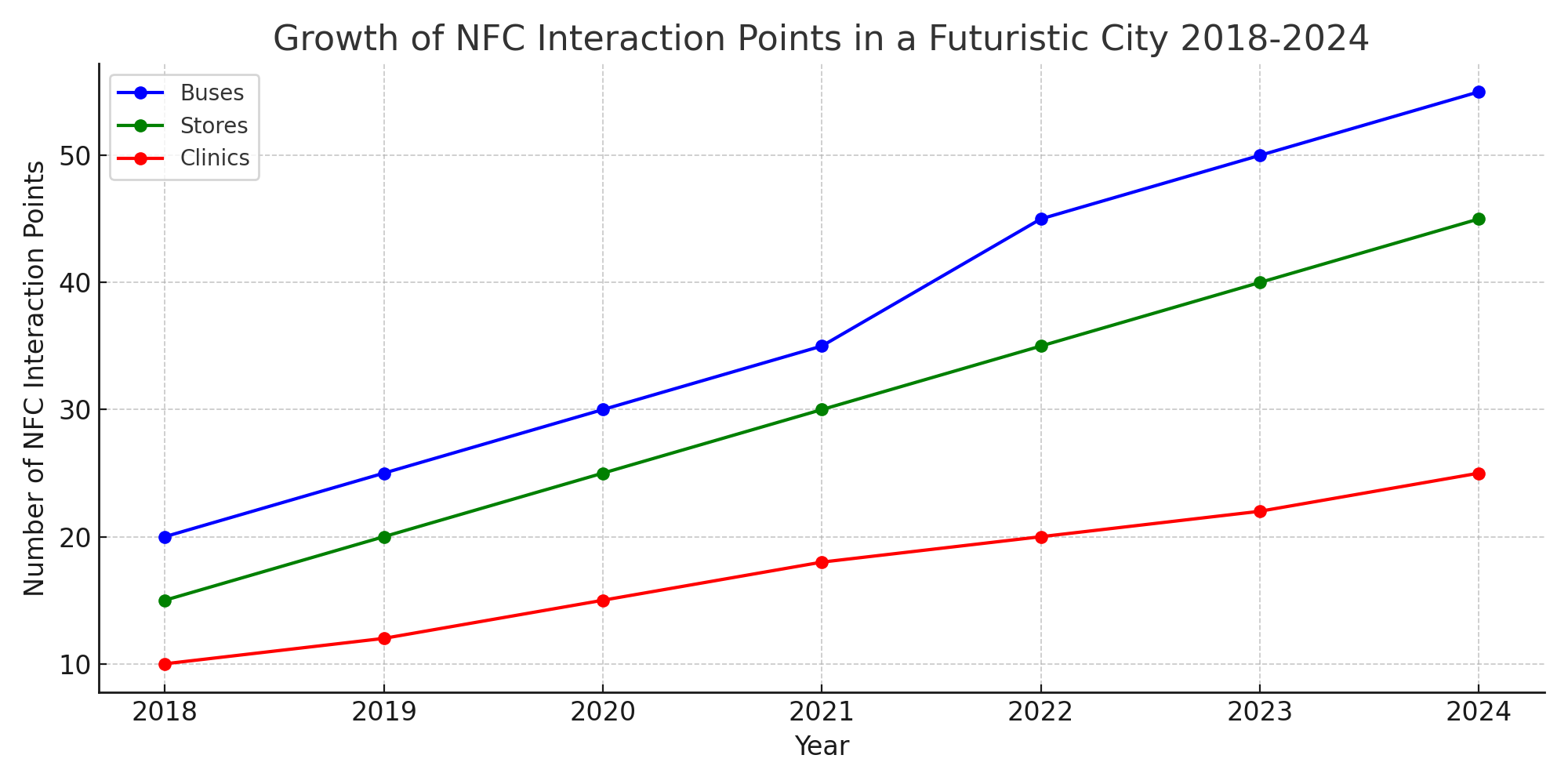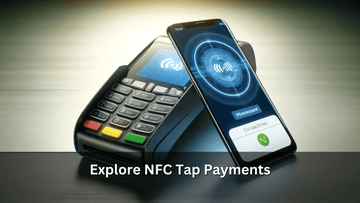NFC User Experiences

Improving User Experience Using Near-Field Communications (NFC)
Introduction to NFC in User Experience
Near-field Communication (NFC) is revolutionizing user experiences across multiple sectors. This wireless technology allows devices to exchange data when placed within a few centimeters of each other, simplifying transactions and interactions. Widely recognized for its role in facilitating quick and secure payments, NFC's capabilities extend far beyond. It streamlines access controls, enhances public transport systems, and personalizes customer interactions through loyalty programs. By offering an effortless way to connect and communicate, NFC is setting new standards for convenience and efficiency in everyday activities, making it a cornerstone of modern digital user experiences.
Payment Solutions
NFC technology is transforming the payment industry by offering a faster, more convenient, and secure method of conducting transactions. By simply tapping a smartphone or NFC-enabled card near a point-of-sale terminal, users can complete purchases without swiping, inserting, or entering a PIN. This contactless payment method is not only quick but also reduces physical contact, which has become increasingly important. NFC supports a range of devices including smartphones, wearables, and cards, making it accessible to a broad audience. Additionally, as businesses adopt NFC, they are able to streamline operations and provide enhanced customer service, further incentivizing the shift towards contactless ecosystems. For more information on how NFC is used in payment solutions, you can visit Square and PayPal.

-
Streamlining Transactions
NFC empowers users to conduct transactions swiftly with a simple tap. This eliminates the need for traditional payment methods, significantly reducing wait times and improving throughput at checkout points. The efficiency brought by NFC leads to a smoother, quicker shopping experience for consumers.
-
Enhancing Security Features
NFC payments are equipped with advanced encryption standards, ensuring that user data is securely transmitted during transactions. Each interaction generates a unique, one-time code, greatly minimizing the risk of fraud. This secure framework not only protects consumers but also builds trust in NFC technology as a safe payment option.
Access and Identity Controls
NFC technology is revolutionizing access and identity control systems by enabling more secure and convenient verification processes. Utilizing NFC, users can gain entry to buildings, networks, and systems through a simple tap of their NFC-enabled device. This method replaces traditional keys and physical badges with digital credentials that are harder to duplicate. NFC's flexibility allows it to be integrated into smartphones, wearables, or cards, catering to different user preferences and security requirements. As a result, organizations can implement more robust access control measures while enhancing user convenience. This technology not only speeds up the entry process but also enhances security protocols, making it an invaluable tool in safeguarding sensitive areas and data.
-
Simplifying Access Control Systems
NFC simplifies access control by replacing traditional keys and cards with digital credentials on NFC-enabled devices. This shift allows for quick and easy entry with just a tap, streamlining the process for users while reducing administrative overhead for issuing and managing physical access tools.
-
Secure Identity Verification Processes
NFC enhances security by enabling encrypted, bi-directional communication during identity verification. This process ensures that the information exchanged is protected and only accessible to authorized devices, significantly reducing the potential for identity theft and unauthorized access. NFC's robust security features are essential for maintaining confidentiality and integrity in sensitive environments.
NFC in Public Transport
NFC technology is streamlining public transportation systems worldwide by facilitating faster and more convenient travel experiences. Commuters can now use NFC-enabled devices, such as smartphones or smartcards, to tap-and-go at entry and exit points, seamlessly integrating fare payment and gate access. This technology reduces the need for physical tickets or cash transactions, speeding up boarding times and reducing queues significantly. It also enables transit authorities to gather data for improving service efficiency and planning. By making public transport more accessible and user-friendly, NFC is playing a crucial role in promoting public transit usage. For an in-depth look at how NFC mobile payments function and their growing significance, Business.com offers valuable insights.

-
Speeding Up Commutes
NFC technology expedites commutes by enabling quick tap-and-go access at transit stations. This efficiency eliminates the hassle of fumbling for tickets or cash, significantly reducing entry times and making peak-hour travel smoother and faster for millions of daily commuters.
-
Integrating Fare Payments
Integrating fare payments through NFC allows commuters to effortlessly manage travel expenses with a simple tap of their device. This integration supports a variety of payment methods, including credit, debit, and preloaded transit cards, enhancing convenience and flexibility in public transport fare systems.
Loyalty and Rewards Programs
NFC technology is revolutionizing loyalty and rewards programs by enabling businesses to interact more personally and efficiently with their customers. By incorporating NFC, companies can seamlessly link transactions to customer profiles, facilitating instant rewards and recognition. This capability allows for the delivery of personalized offers and discounts directly at the point of sale, enhancing customer satisfaction and retention. The immediacy and convenience of NFC ensure that customers are more likely to participate in these programs, boosting engagement and fostering long-term loyalty. Businesses benefit from detailed purchase data, which helps refine marketing strategies and improve customer service.
-
Encouraging Customer Loyalty
NFC streamlines the integration of loyalty programs by allowing instant recognition and rewards at the point of sale. This immediate gratification motivates continued patronage, effectively increasing customer retention and enhancing overall loyalty to the brand.
-
Personalizing Offers and Rewards
NFC enables businesses to personalize interactions by recognizing individual customer preferences and purchase history. This data-driven approach allows for targeted offers and rewards, significantly increasing the relevance and appeal of promotions, thereby improving customer engagement and satisfaction.
Healthcare Applications
NFC technology is making significant strides in healthcare by enhancing patient experiences and streamlining equipment management. With NFC-enabled devices, healthcare providers can quickly access patient records, verify identities, and ensure accurate treatment protocols. This technology also simplifies the tracking and management of medical equipment, reducing errors and improving operational efficiency. By integrating NFC, hospitals can facilitate secure communication and data exchange, supporting better patient care and compliance with health regulations. This not only improves safety and convenience but also helps healthcare facilities maintain high standards of care and patient satisfaction.
-
Enhancing Patient Experience
NFC technology elevates patient care by enabling instant access to medical records and treatment plans with a simple tap, ensuring personalized and timely healthcare. This convenience enhances patient satisfaction and trust in healthcare services.
-
Streamlining Medical Equipment Management
NFC assists in efficiently managing medical equipment by enabling real-time tracking and status updates with quick scans. This capability minimizes downtime and enhances the availability of essential tools, significantly improving the responsiveness and effectiveness of healthcare services.
Smart Equipment Tags
NFC technology is transforming asset management with smart equipment tags that facilitate easy tracking, maintenance, and inventory control. By embedding NFC tags on equipment, organizations can instantly access detailed information about the asset, such as service history, location, and performance data, with a simple tap of an NFC-enabled device. This application is particularly advantageous in sectors with significant equipment investments like healthcare, manufacturing, and banking. NFC tags help reduce downtime and increase operational efficiency by ensuring timely maintenance and reducing the incidence of lost or mismanaged assets. Furthermore, the ease of updating and retrieving data from NFC tags supports better decision-making and compliance with industry regulations, enhancing overall business processes. For further details on implementing NFC payment systems, Stripe offers a comprehensive guide at How to Accept Contactless NFC Payments.
-
Case Study: Banking Sector
In the banking sector, NFC-equipped smart tags track and manage cash handling equipment, ATMs, and other critical assets. This system ensures optimal operational flow and security, reducing equipment failure rates and enhancing customer service by maintaining high availability and performance standards.
-
Operational Efficiency in Asset Management
NFC tags dramatically enhance operational efficiency by allowing instant access to asset data. This capability facilitates quick decisions on maintenance, deployment, and replacement, ensuring that assets are utilized efficiently and downtime is minimized. NFC's real-time tracking also prevents asset misplacement and theft, securing investments crucially.
We at NFC Tagify provide all sort of NFC Solutions or you may contact us: Tel. 01600800080, Email: info@nfctagify.com








